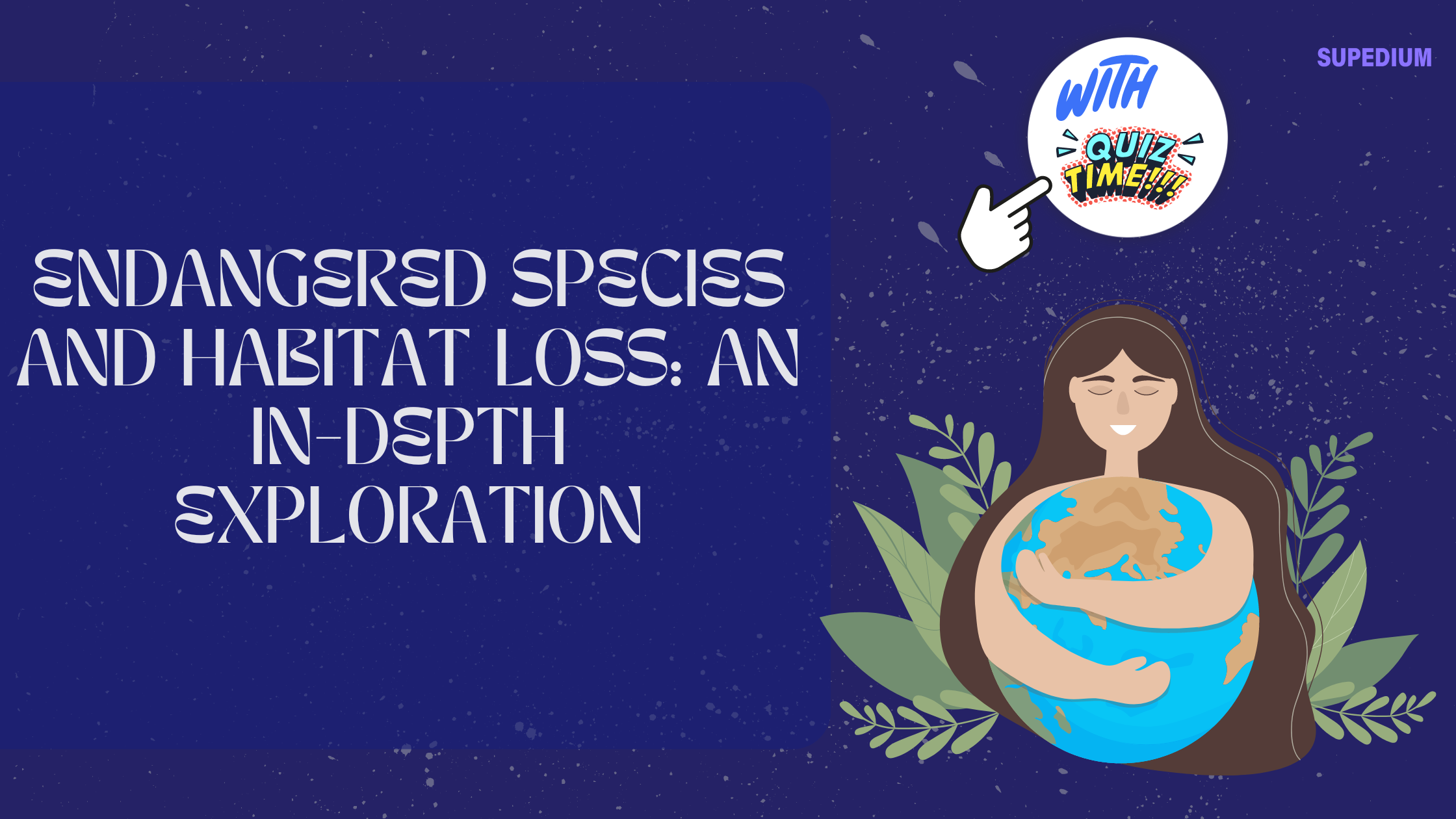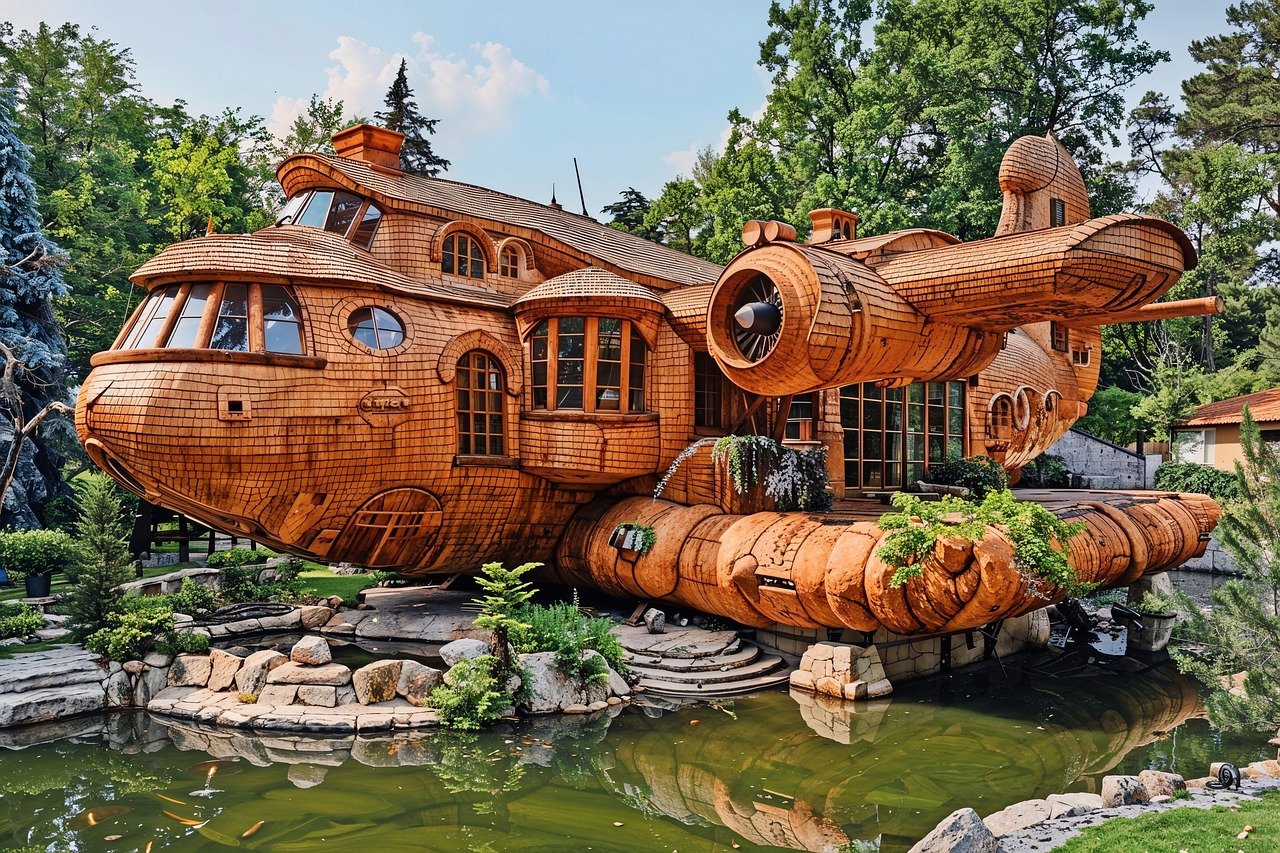Table of Contents
![]()
Introduction
The plight of endangered species and the loss of their habitats represent two of the most pressing environmental challenges of our time. An endangered species is one that faces a high risk of extinction in the wild due to factors such as habitat loss, overexploitation, and climate change. Habitat loss refers to the degradation, destruction, and fragmentation of natural environments that species rely on for survival. Understanding the interplay between these two issues is crucial for developing effective conservation strategies and ensuring the protection of biodiversity.
Causes of Habitat Loss
- Deforestation
Deforestation, the large-scale removal of forests, is a significant driver of habitat loss. Logging for timber and clearing land for agriculture contribute to the destruction of vital forest ecosystems. Tropical rainforests, which harbor a vast array of species, are particularly affected. The loss of these forests not only endangers species like the jaguar and the golden lion tamarin but also disrupts global climate patterns.
- Urbanization and Infrastructure Development
As human populations grow, the expansion of cities and industrial areas encroaches upon natural habitats. The construction of roads, bridges, and other infrastructure fragments ecosystems, isolating wildlife populations and disrupting migration patterns. This urban sprawl often results in the loss of critical habitats for species such as the American bison and various amphibians.
- Agricultural Expansion
The conversion of natural landscapes into croplands and pastures for agriculture leads to substantial habitat loss. This transformation affects ecosystems by altering soil composition, water availability, and vegetation cover. The use of pesticides and fertilizers can further degrade habitats and harm non-target species, including pollinators like bees and butterflies.
- Climate Change
Climate change poses a growing threat to habitats and the species that depend on them. Shifts in weather patterns, such as increased temperatures and altered precipitation rates, impact ecosystems and the distribution of species. Coastal habitats are particularly vulnerable, with rising sea levels threatening wetlands and mangrove forests.
- Pollution
Pollution affects ecosystems in numerous ways, from air and water pollution to soil contamination. Toxic substances released into the environment can have detrimental effects on wildlife health, reproductive success, and habitat quality. For example, plastic pollution in oceans threatens marine species such as sea turtles and seabirds.
- Overexploitation
Overexploitation through overfishing, hunting, and illegal wildlife trade depletes species and disrupts ecosystems. Unsustainable practices can lead to population declines and, in extreme cases, extinction. Iconic species like elephants, which are targeted for their ivory, and marine species such as tuna, which face overfishing pressures, exemplify the consequences of overexploitation.
Impact of Habitat Loss on Species
- Loss of Biodiversity
Habitat loss leads to a reduction in species diversity, which diminishes the resilience of ecosystems. A decline in biodiversity affects ecosystem services such as pollination, water purification, and nutrient cycling. This can have cascading effects on human well-being and environmental health.
- Disruption of Ecosystems
The fragmentation and destruction of habitats disrupt ecological relationships and food webs. Species that rely on specific plants or animals for survival may face food shortages or increased competition. For instance, the decline of certain prey species can affect predator populations, leading to further ecological imbalances.
- Population Declines
The loss of habitat reduces the available space and resources for wildlife, leading to population declines. Species may face increased competition for food, mates, and territory. Additionally, habitat fragmentation can result in smaller, isolated populations that are more vulnerable to inbreeding and genetic problems.
- Extinction Risks
Many species are driven to extinction as a direct result of habitat loss. Notable examples include the passenger pigeon, which was driven to extinction in the early 20th century due to habitat destruction and hunting, and the Yangtze giant softshell turtle, which is critically endangered due to habitat loss and human interference.
Case Studies
- The Amazon Rainforest
The Amazon Rainforest, often referred to as the “lungs of the Earth,” faces severe threats from deforestation. The loss of this critical habitat impacts numerous species, including the jaguar and the golden lion tamarin. Conservation efforts are ongoing, with initiatives focusing on sustainable land use and protected area establishment.
- The Great Barrier Reef
The Great Barrier Reef, the world’s largest coral reef system, is experiencing severe impacts from coral bleaching caused by rising sea temperatures. This phenomenon affects marine species such as clownfish and sea turtles. Conservation strategies include efforts to reduce greenhouse gas emissions and protect reef areas from further stress.
- African Savanna
In the African Savanna, habitat loss due to agricultural expansion and human-wildlife conflict threatens species like elephants and rhinoceroses. Conservation efforts in this region include anti-poaching measures, habitat restoration projects, and community-based conservation programs to mitigate human-wildlife conflicts.
Conservation Strategies
- Protected Areas and Reserves
Establishing protected areas such as national parks and wildlife reserves is a fundamental strategy for conserving habitats and species. These areas provide safe havens for wildlife and help preserve critical ecosystems. Effective management and enforcement are essential to the success of protected areas.
- Restoration Ecology
Restoration ecology focuses on rehabilitating degraded habitats to restore their ecological functions and biodiversity. Techniques include reforestation, wetland restoration, and the removal of invasive species. Successful restoration projects demonstrate the potential for ecosystems to recover and support diverse wildlife.
- Legislation and Policy
National and international laws play a crucial role in protecting endangered species and their habitats. Organizations like the Convention on International Trade in Endangered Species of Wild Fauna and Flora (CITES) and the International Union for Conservation of Nature (IUCN) work to establish and enforce regulations that safeguard biodiversity.
- Community Involvement and Education
Engaging local communities in conservation efforts is vital for achieving long-term success. Environmental education programs raise awareness about the importance of conservation and encourage sustainable practices. Community-based conservation initiatives empower local people to protect and manage natural resources.
- Sustainable Practices
Adopting sustainable practices in agriculture, forestry, and fisheries helps reduce habitat loss and environmental impact. Sustainable land use, responsible resource management, and efforts to mitigate climate change contribute to the conservation of habitats and species.
Future Directions
- Advances in Conservation Science
Advancements in technology, such as satellite monitoring and genetic studies, offer new tools for conservation. Innovations in conservation science help track species populations, assess habitat conditions, and develop targeted interventions.
- Global Collaboration and Partnerships
Addressing habitat loss and endangered species requires global collaboration. Partnerships between governments, non-governmental organizations, and the private sector are essential for coordinating conservation efforts and mobilizing resources. International cooperation helps address transboundary conservation challenges and promotes the sharing of knowledge and best practices.
Conclusion
The loss of habitats and the endangerment of species are critical issues that demand urgent attention and action. By understanding the causes and impacts of habitat loss and implementing effective conservation strategies, we can work towards preserving the planet’s biodiversity. Individual and collective efforts are essential to protect endangered species, restore habitats, and ensure a sustainable future for all living beings. Engaging in conservation initiatives and supporting policies that promote environmental stewardship are crucial steps in safeguarding our natural world for generations to come.






Be the first to comment